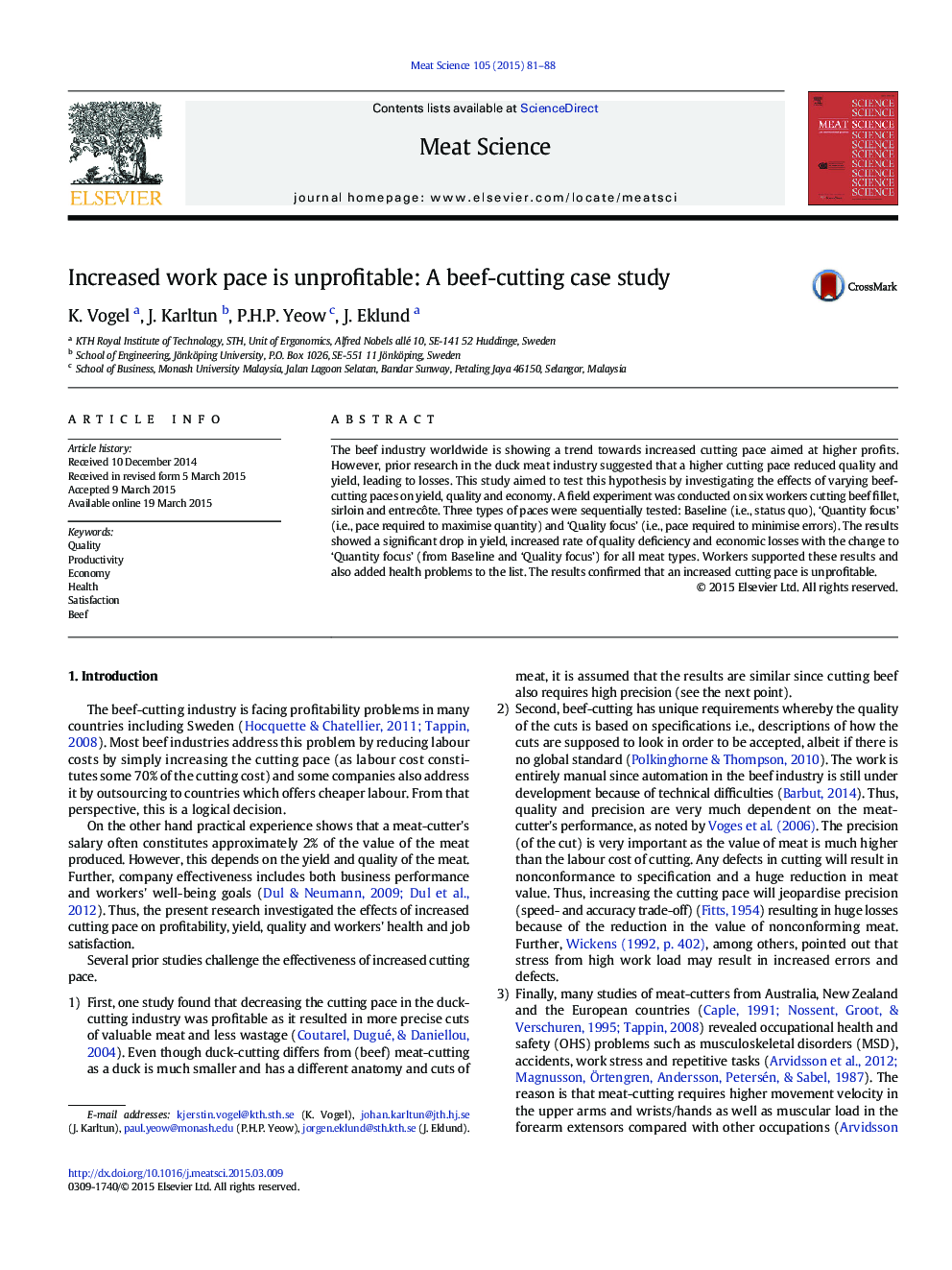| کد مقاله | کد نشریه | سال انتشار | مقاله انگلیسی | نسخه تمام متن |
|---|---|---|---|---|
| 2449683 | 1554089 | 2015 | 8 صفحه PDF | دانلود رایگان |
• A field study of cutting beef fillet, sirloin and entrecôte.
• Three types of work paces were compared.
• Yield, defect rates, revenue, labour cost and profit/loss were calculated.
• An increase in work pace resulted in lower precision and decrease in quality of output.
• The key result was an economic loss when cutting pace was increased.
The beef industry worldwide is showing a trend towards increased cutting pace aimed at higher profits. However, prior research in the duck meat industry suggested that a higher cutting pace reduced quality and yield, leading to losses. This study aimed to test this hypothesis by investigating the effects of varying beef-cutting paces on yield, quality and economy. A field experiment was conducted on six workers cutting beef fillet, sirloin and entrecôte. Three types of paces were sequentially tested: Baseline (i.e., status quo), ‘Quantity focus’ (i.e., pace required to maximise quantity) and ‘Quality focus’ (i.e., pace required to minimise errors). The results showed a significant drop in yield, increased rate of quality deficiency and economic losses with the change to ‘Quantity focus’ (from Baseline and ‘Quality focus’) for all meat types. Workers supported these results and also added health problems to the list. The results confirmed that an increased cutting pace is unprofitable.
Journal: Meat Science - Volume 105, July 2015, Pages 81–88
